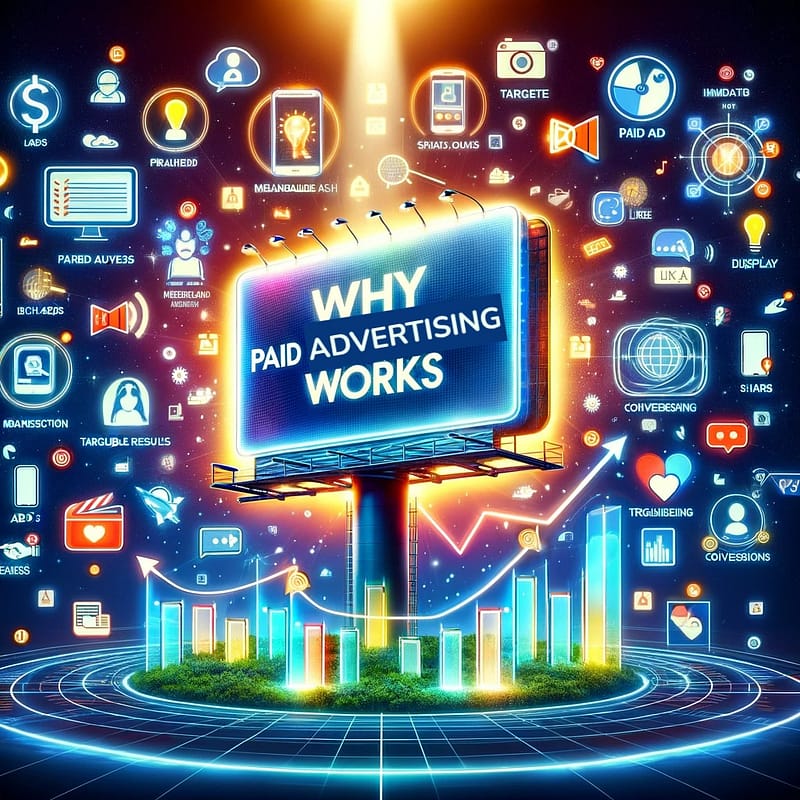Paid Advertising, PPC, and Paid Social - Understaind the Digital Landscape
In the ever-evolving digital marketing landscape, where algorithms shift and trends morph overnight, it’s more crucial than ever to wield your advertising arsenal with precision. And while the term “paid advertising” might seem like a catch-all, beneath its umbrella lie distinct strategies, each wielding its own power and potential. Today, we dissect the nuances of three fundamental approaches: Paid Advertising, Pay-Per-Click (PPC), and Paid Social. Like three sharp tools in a digital carpenter’s kit, they may share similarities, but understanding their unique facets can transform your marketing campaigns from hit-or-miss to meticulously crafted masterpieces.
Here’s a short description of some key terms:
Paid Advertising: Any online or offline advertisement you pay for to reach a target audience and achieve specific goals, like brand awareness, lead generation, or sales.
Pay-Per-Click (PPC): A specific type of paid advertising where you only pay when someone clicks on your ad. Common on search engines, social media, and websites.
Paid Social: Paid advertising specifically on social media platforms like Facebook, Instagram, and LinkedIn. Uses various formats like text, images, videos, and stories to target users based on demographics, interests, and behaviors.



Paid Advertising: A Broad Spectrum of Opportunities
Paid Advertising is a comprehensive term that encompasses any form of advertising you pay for. This includes a wide range of platforms, both online and offline, such as television, radio, print media, and digital channels. The primary focus of paid advertising is to enhance brand awareness, generate leads, and drive sales. The payment model varies based on the platform and can be based on clicks, impressions, engagements, or other metrics.
Key Aspects of Paid Advertising:
- Versatile Platforms: Utilizes a diverse array of channels.
- Varied Objectives: Aims for brand visibility, lead generation, and sales.
- Flexible Payment Models: Payment depends on the type of engagement or exposure.
PPC: Precision in Every Click
PPC, or Pay-Per-Click, is a more specific model of online advertising where you pay only when someone clicks on your ad. This approach is predominant on search engines, social media, and content websites. PPC is designed to drive targeted traffic to your website, thereby increasing the chances of conversions. The essence of PPC is in its name – you only pay for the actual clicks, making it a cost-effective strategy for many businesses.
Key Aspects of PPC:
- Targeted Reach: Focuses on attracting specific audience segments.
- Cost-Effective: Only pay for clicks, not impressions.
- Diverse Platforms: Common on search engines, social media, and various websites.
Paid Social: Engaging the Social Sphere
Paid Social refers to the practice of advertising on social media platforms. This method leverages platforms like Facebook, Instagram, Twitter, and LinkedIn to reach potential customers. The primary goals of Paid Social are brand awareness, lead generation, and conversions. While it often employs a pay-per-click model, other payment structures also exist depending on the platform and campaign objectives.
Key Aspects of Paid Social:
- Platform-Specific: Tailored for social media environments.
- Varied Objectives: Suitable for brand building, lead generation, and conversion strategies.
- Flexible Payment Models: Includes pay-per-click and other models.
In summary, while these three marketing strategies have overlapping areas, they each serve distinct purposes. Paid Advertising is the umbrella under which various forms of paid promotions fall, offering a broad reach across multiple channels. PPC is a cost-effective, targeted approach, ideal for driving specific actions like website visits or conversions. Paid Social, on the other hand, harnesses the power of social media for diverse marketing objectives, offering unique engagement opportunities. Understanding the strengths and applications of each can significantly enhance your digital marketing strategy, ensuring that you invest in the right approach for your business goals.
© All Rights Reserved.
